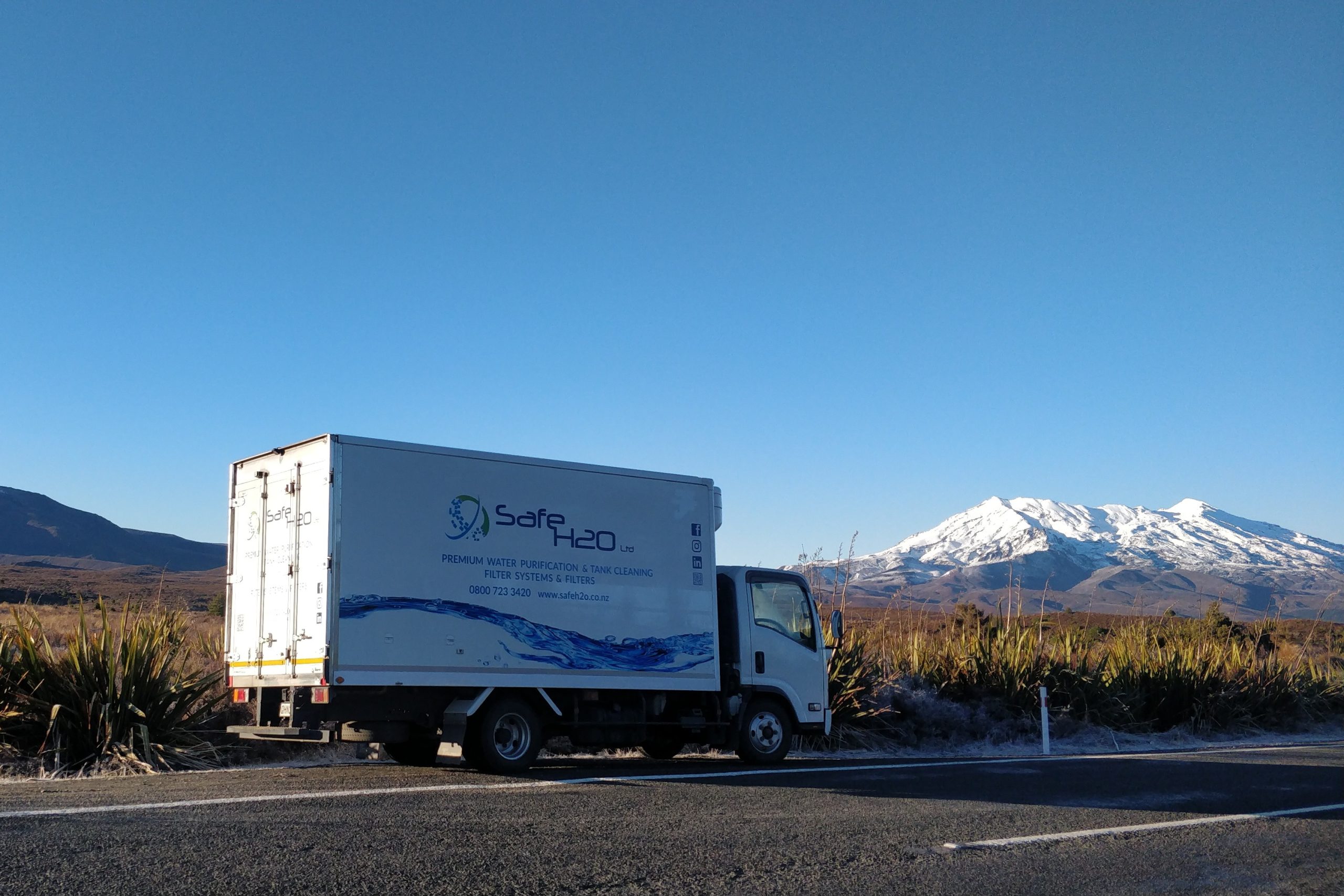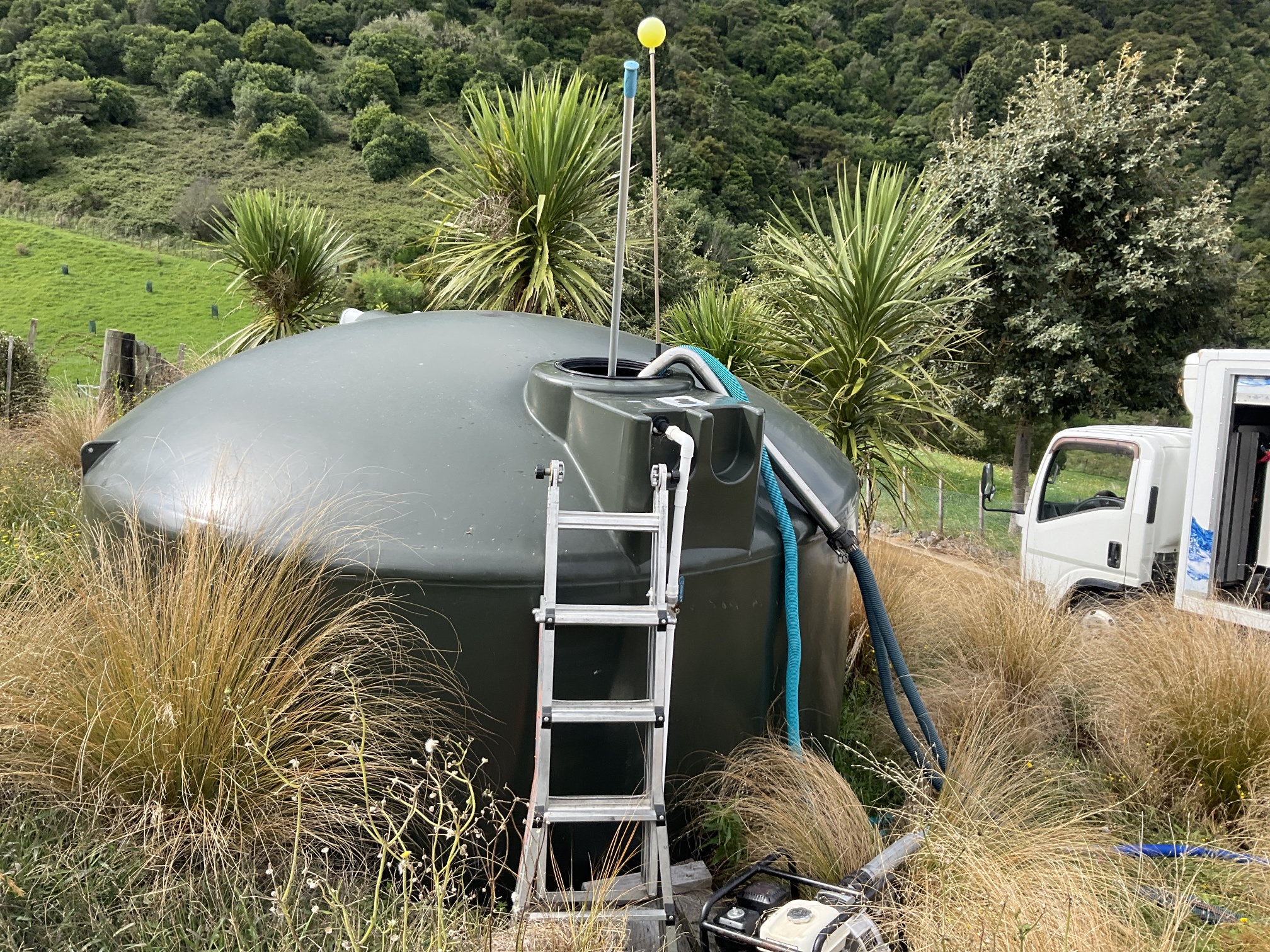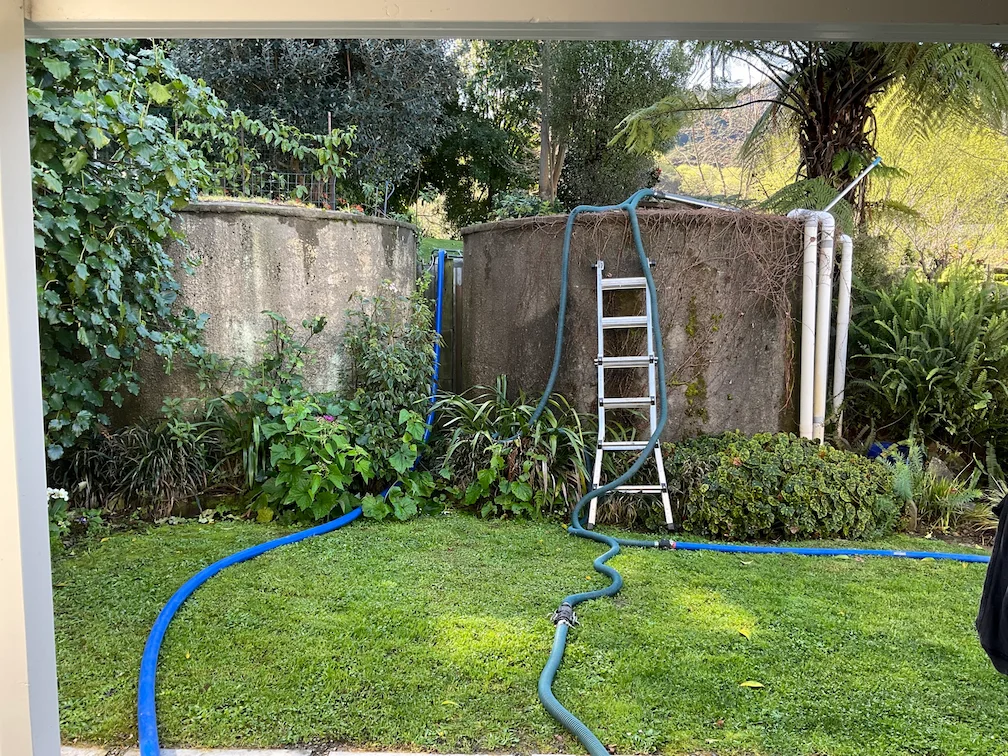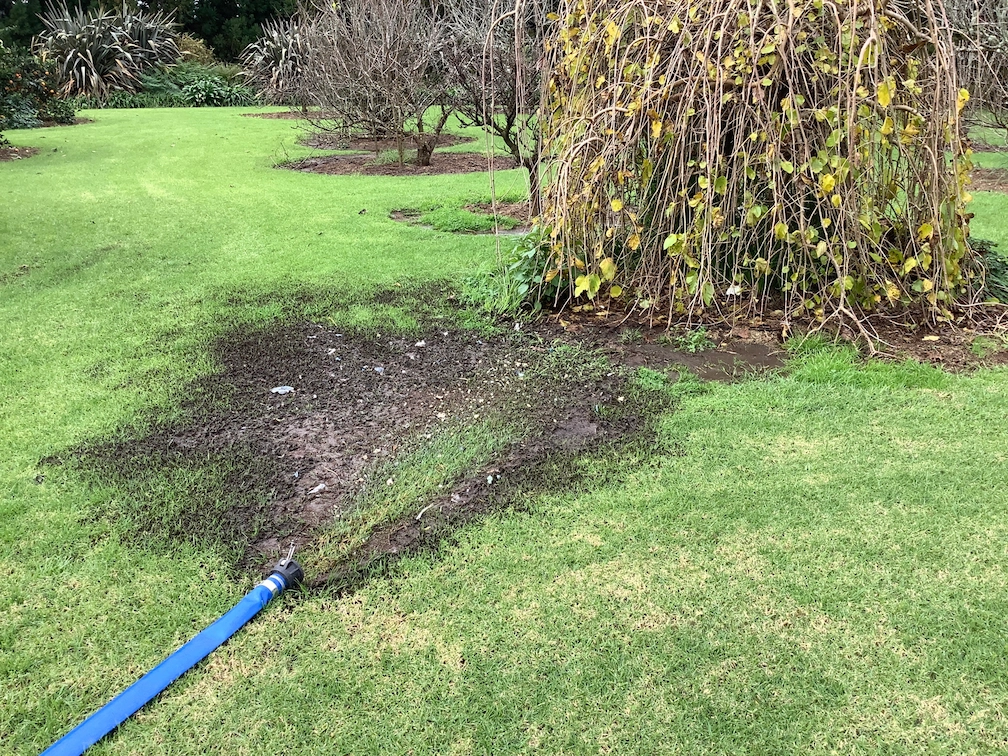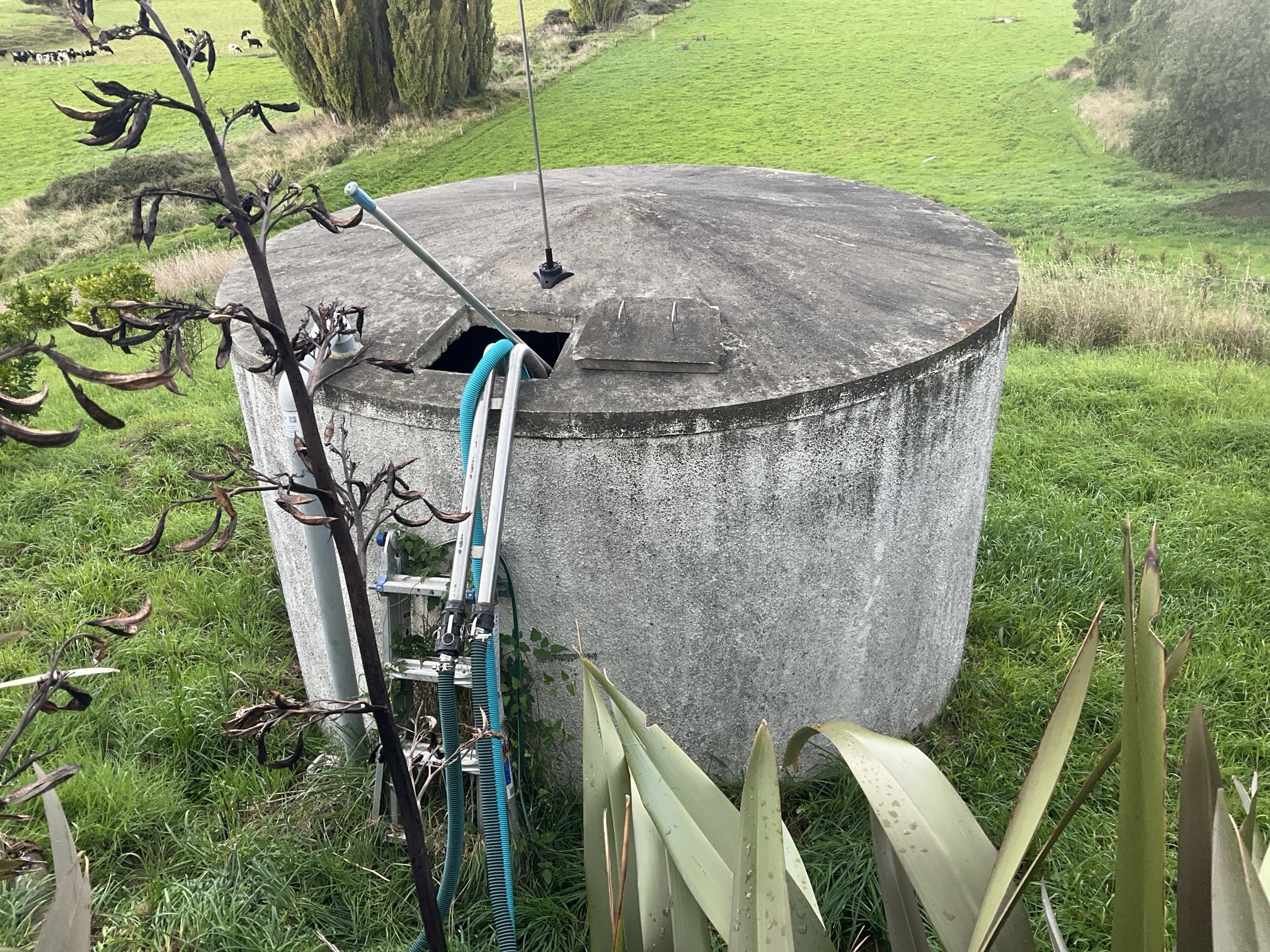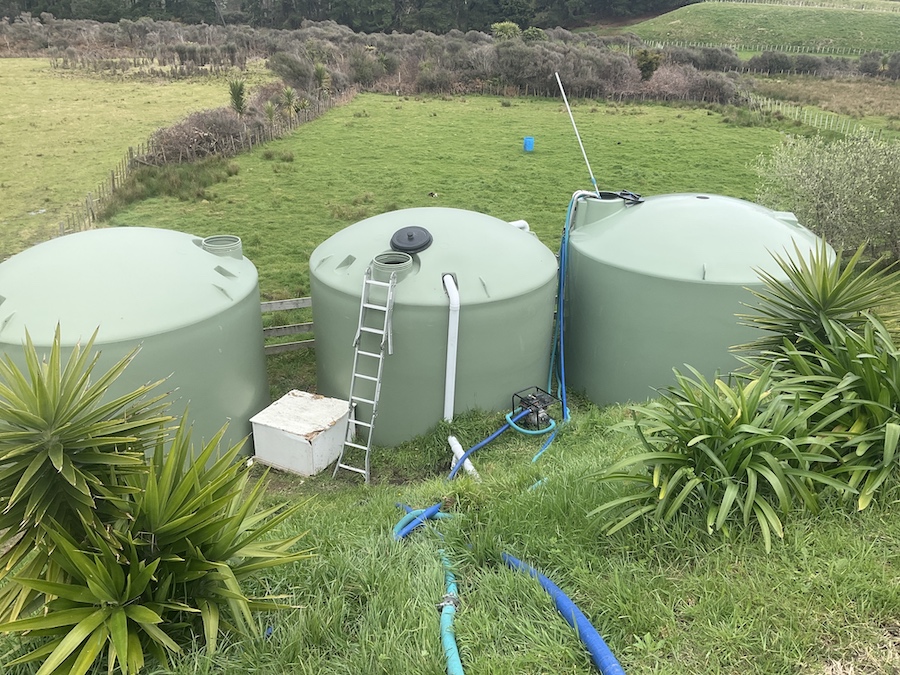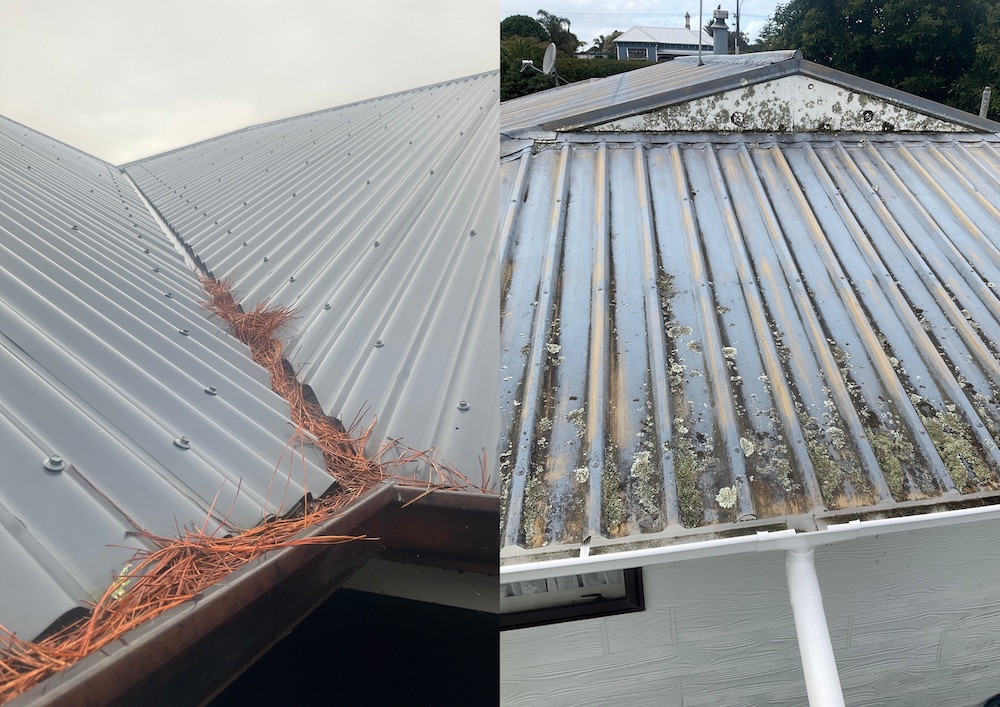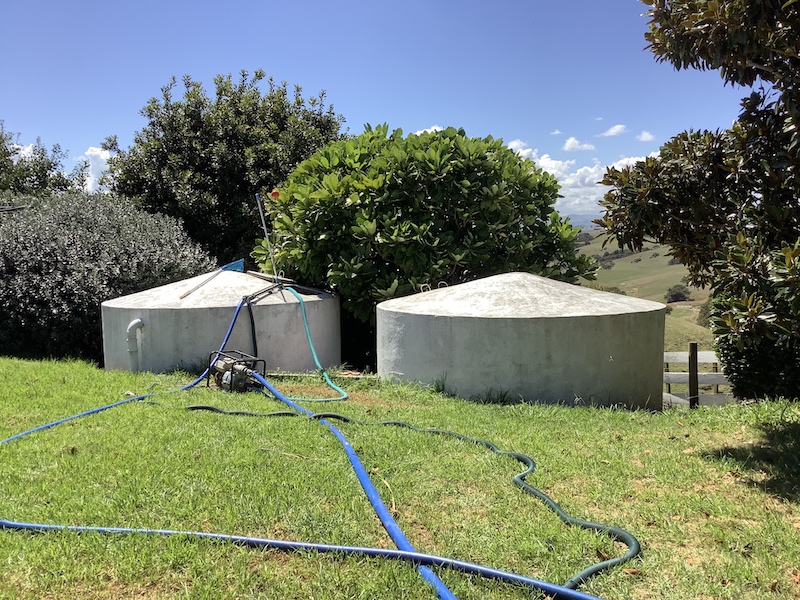What can I do before water enters my tank to help minimise my risks?
Spring or surface water (streams) will usually be contaminated with a range of bacteria and sediment, as well as inorganic and organic contaminants.
Surface water is often an open source of water, so the type and number of contaminants can vary depending on the land management activities occurring in the water catchment.
For example, contamination can be caused by animals and insects drinking or walking in the water or nearby properties run off into the water.
Before the tank
Rainwater fed tanks
Keeping your roof and gutters clean helps minimise the amount of sediment getting into your tank(s).
- The same applies for leaf guards or gutter whiskers.
- Having a flushing cap fitted and regularly opening this during rain events is also a simple and cost-effective way of reducing the amount of organic material entering the tank.
- There are also first flush diverters of varying designs that perform a similar function.
Feel free to check out our blogs on The Importance of Regular, Safe Roof and Gutter Cleaning for Rainwater Tanks or on Flush Caps, Leaf Diverters, and More: Methods to Help Protect Your Water Supply. These blogs have extensive information on how to safely clean your roof and gutters and methods to minimise contamination respectively.
Spring/Surface water fed tanks
Spring or surface water (streams) will usually be contaminated with a range of bacteria and sediment, as well as inorganic and organic contaminants. Surface water is often an open source of water, so the type and number of contaminants can vary depending on the land management activities occurring in the water catchment. For example, contamination can be caused by animals and insects drinking or walking in the water or nearby properties run off into the water.
To reduce the levels of these contaminants we recommend you:
- Exclude high-risk activities from the catchment, if possible, e.g. intensive stock grazing, chemical spraying, cultivation and cropping, application of poison for pest management etc.
- Use an infiltration system in the bed or bank of the stream where possible to filter out large contaminants
- Provide a settling basin or tank downstream of the surface water intake to settle out sediment and other large contaminants
- Avoid taking water during periods when the source is very dirty e.g. after a rain event, by providing extended water storage.
Bore fed tanks
Bore water can be contaminated by contact with contaminated soil, surface water and/or shallow groundwater. To mitigate these risks, make sure your bore meets the following requirements:
- At least 50 metres away from any wastewater treatment, collection or discharge system e.g. septic tanks and discharge fields
- Sealed for the first few metres below ground with a sealing clay or other impervious material
- Sealed at the surface with a concrete apron which sheds rainwater away from the bore
- All penetrations of the bore by pipes or cables are closed and secure
- All stock is excluded from approaching closer than 10 metres to the bore.
As these sources (bore and surface/spring water) contact the earth they can and do pick up elements such as iron, manganese as well as bacteria from the ground. A water chemistry test of the source water is required to determine what exactly the make-up of each groundwater supply is.
This will determine if any pre-treatment is required for the water source prior to storage by comparing the water to the NZ Drinking Water Standards and being able to ascertain if the water is within the required specifications for UV filtration to function.
A common example relating to NZ ground water is the presence of iron and manganese. If these elements are present above a certain concentration, they will render UV filtration ineffective. These levels are lower than the acceptable levels for the NZ Drinking Water Standards. As such the water would need treatment to remove these chemicals prior to storage.
Another common challenge with bore water supply is the imbalance in pH levels. Bore water, along with rainwater, tends to be naturally acidic, although it can often stabilise due to the minerals present in the tank.
However, if the pH level continues to stray from neutrality (7), it can become corrosive to plumbing appliances. To restore the pH to a neutral level, it is advisable to use pH-adjusting media such as Aquafier or natural minerals like lime.
At the tank
Nothing will fully stop all sediment getting into your tank so regular tank cleaning is a must. You could also consider a floating out-take pipe so that you are drawing the water from your tank well above any sediment that may collect at the bottom of the tank. This is less of a factor if you undertake regular tank cleans!
If you have more than one tank and they are equalised (joined), then the primary (first recipient of water) tank will gather a greater amount of sediment in it than the subsequent tanks. In this circumstance drawing your water into the house from the secondary tank or if more than two tanks, the tank farthest away from the primary tanks, is sensible.
After the tank
Some form of filtration at your pump is advisable to provide ongoing protection between tank cleans, as the sediment present in the tank water builds up again after a tank clean. Sediment + UV filtration is optimal, as the UV will neutralise bacteria that enters your water supply. This works hand in hand with a regular tank clean to provide safe and clean water.
In summary, taking proactive measures before water enters your tank is essential for maintaining clean and safe water. From keeping roofs and gutters clear to using filtration systems, each step can significantly reduce contaminants. However, no amount of preventative action can replace the importance of regular tank cleaning. If you’ve noticed a decline in your tank’s condition or it’s been too long since your last clean, our dedicated team is ready to help restore your tank to optimal health.
Don’t wait—give us a call today and ensure the quality of your water supply!
Concerned about nitrates in your water, and want to know how to get rid of them?
In this blog, we'll explore these frequent water tank problems and provide practical solutions to address them effectively
Smoke and soot can contaminate NZ water tanks. Learn how it happens, the health risks, and Safe H2O’s expert tips for cleaning and prevention.
This comprehensive guide examines the benefits and drawbacks of DIY and professional water tank cleaning, enabling you to make the best choice for your home.
Winter’s cooler weather might not have you thinking about your water tank - but it should.
Whether you’re collecting rainwater, drawing from a bore, or tapping into a stream, your water tank is the heart of your...
Whether you’re collecting rainwater, drawing from a bore, or tapping into a stream, your water tank is the heart of your...
How Possums, Rodents, and Birds Get into Your Water Tank – and How to Keep Them Out When thinking about water quality, …
What’s in Your Water? Common Contaminants in NZ Drinking Water Tanks Whether your water comes from rainfall, a bore or a nearby …
Water Tank Cleaning Myths Debunked When it comes to maintaining clean and safe water in your tank, there can be a bit …
Autumn Water Tank Care Tips: Preparing for the Seasonal Change As the crisp air of autumn rolls in, it’s time to think …
Water Tank Cleaning: A Comparison of Traditional vs. Our Innovative Method When it comes to cleaning your water tank, Safe H2O cleans …
UNDERSTANDING FILTRATION SYSTEMS: WHAT IS SEDIMENT AND UV WATER FILTRATION? Your water source likely contains a myriad of sediments and particles, ranging …
Water Tanks 101: A Beginner’s Guide to Clean, Safe Water for Your Property Water tanks are an essential resource for those on …
What can I do before water enters my tank to help minimise my risks? Spring or surface water (streams) will usually be …
When it comes to maintaining a healthy rainwater fed tank, one of the most overlooked aspects is the cleanliness of your roof and gutters.
Flush Caps, Leaf Diverters, and More: Methods to Help Protect Your Water Supply When it comes to maintaining a clean and safe …
In the realm of curious misconceptions, one fascinating myth suggests that eels clean water tanks. While this idea captures the...
Why having ‘Immunity’ to Bad Tank Water is a Bad Thing When it comes to maintaining a healthy home, clean water is …
Safe H2O Collaborates with Isaac’s Plumbing, Pumping and Electrical Here at Safe H2O, we aim to provide exceptional advice, service, and support …
How Often Do New Zealand Schools Need to Clean Their Water Tanks? Here in NZ, managing water supplies, including water tank maintenance …
What is Cryptosporidium and How to Keep Your Water Safe What is Cryptosporidium? In simple terms, Cryptosporidium is a tiny parasite that …
Why you should use a Water Tank Cleaning Specialist Well maintained water tanks are the backbone of clean water storage and supply …
Guarding Against E. coli: Essential Strategies for Ensuring Safe Water Tank Systems Water tanks are an essential source of clean drinking water …
5 Top Reasons to Keep Your Water Tank Clean in New Zealand Cleaning your water tanks is something that’s probably not always …
Autumn Alert: Why Now is the Perfect Time to Clean Your Water Tank As the autumn leaves are about to fall and …
What are my Legal Obligations for water tank cleaning in New Zealand? Taumata Arowai is the new Water Services Regulator for Aotearoa …
Top signs your water tank needs cleaning – Don’t ignore these red flags Your water tank is a vital component of your …
How Often Should I Clean My Water Tank in New Zealand? If you are one of the thousands of New Zealanders with …
The Risks of Cleaning Your Water Tank with Janola or Household Bleach Should you use Janola to clean your water tank? Here …
12 Ways to Save Your Tank Water Worried about your water tanks running empty? Rainfed tank water is a limited supply and …
How much does it cost to clean my water tank? The cost of cleaning a typical New Zealand water tank depends on …





